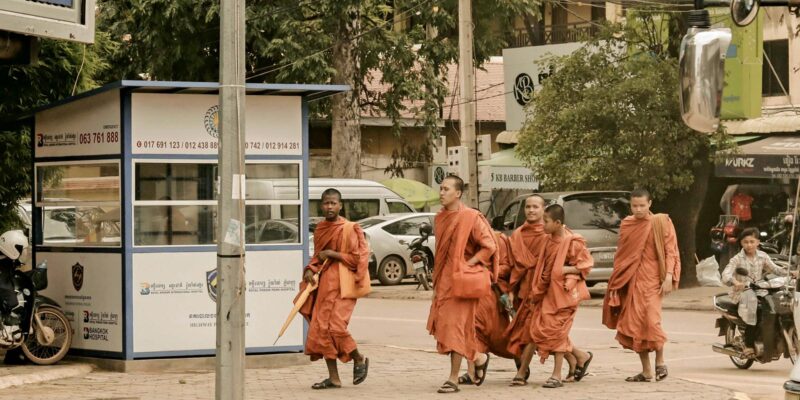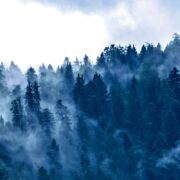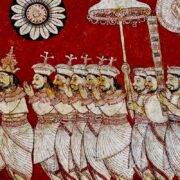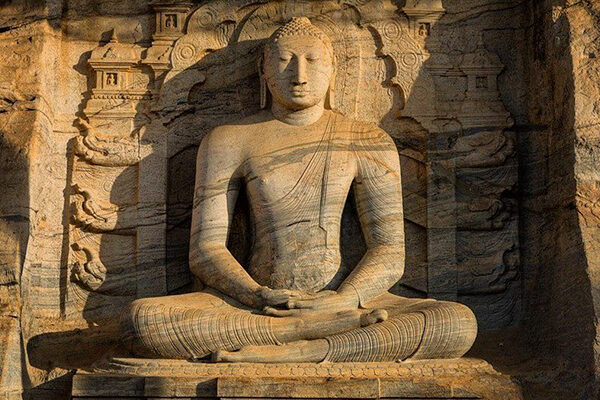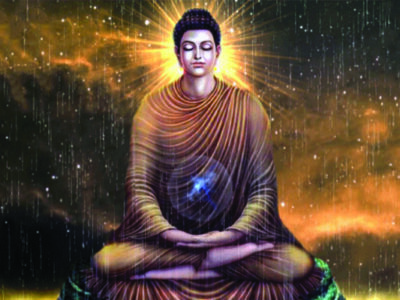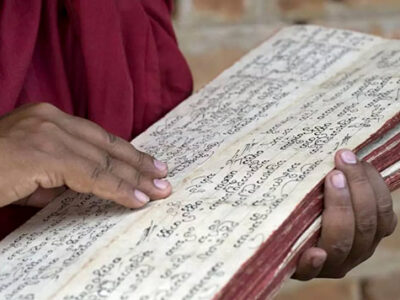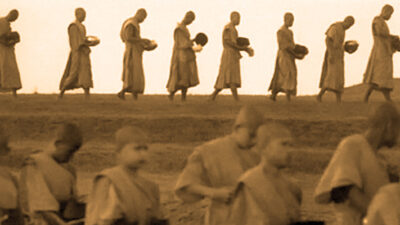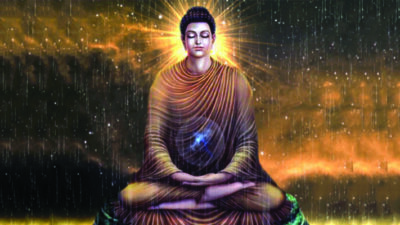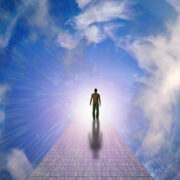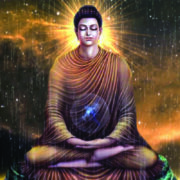By. Prof. Dr. Pravat Chandra Barua
Former Vice-Chancellor –University of Science & Technology –Chattogram Bangladesh
Preamble
Laudable to cite the name of Bangladesh Bouddha Samity (BBS), an ancient, national and international organization which played a tremendous role for the cause of development and reforms of socio-cultural and religious activities during colonial, pre-independence and in present Bangladesh.
Laudable to cite the name of Bangladesh Bouddha Samity
(BBS), an ancient, national and international organization which played a tremendous role for the cause of development and reforms of socio-cultural and religious activities during colonial, pre-independence and in present Bangladesh. It is entrusted with the proximal and intensive linkage with the devotees, social workers and almost all of the peripheral villagers of the country. The prominent role played by Chittagong Buddhist Association (CBA) by meeting Governor Lord Curzon of undivided Bengal in 1904 along with a memorandum has, surprisingly, been proved to be a pioneering move making an unforgettable history of development in every respect of society, economy, religion and culture of the entire community. Its farsighted leadership influences the regeneration and revival of Buddhism in this subcontinent.
This was the first organization in this subcontinent entirely dedicated to the socio-economic improvement of the backward Buddhist community. It played an immense role in the revival and the propagation of the Buddha’s Philosophy of life and its teachings. Chattogrom Bouddha Vihara (CBV) navigated by Bangladesh Bauddha Samity is the labour room of the flourishing Theravada Buddhism.
Archaeological ruins in the museum along with historical evidence had dominated the Buddhism flourishing in this landmass from the 5th to 12th centuries A D or even before. Buddhism had exercised a profound influence in language, culture, social and daily lives of the people since the ancient period. The genesis and origin of Bangla language were deeply rooted with the intellectual practices of Buddhist Bhikkhus; Bouddha Gan O Doha, in lyrical verses and the popular folklore known as Charjyapad. A good number of Buddhist scholars of mediaeval Bengal included Silabhadra, Chandragomin, Shantarakhsita, Kamalsila and Atisha Dipankar Srijnana who glorified world culture and civilization.
With the great patronize of Bangladesh governments, BBS extended bilateral friendship with Asia & SE Asia. And thus this organization played a vital role in strengthening the loving-kindness in the hope of cultivating world peace by creating cultural and diplomatic bondage. In 1864, Arakanese Sangharaja Saramedh Mahastavir (1801-1882) introduced Theraveda Buddhism in this undivided Bengal. He was honoured and acknowledged as the first Sangharaja of the then Supreme Sangha Council in that reforms of Sangha council.
In 1866, another versatile Bengali Bouddha Pandit, Sangharaja Punnachar Achariya Dhammadheri (Chandramohan) Mahasatvir (1838- 1909) did join in that Sangha Council and was honoured as His holiness 2nd Sangharaja of Supreme Sangha Council. In 1884 Bouddha Bandhu Patrika, the first monthly newspaper edited by Kalikingkor Mutsuddy and sponsored by Nazir Krishna Chandra Chowdhury of BBS was introduced. All of these progressive deeds of wisdom greatly influenced Nazir Kirshna Chandra Chowdhury to form a national organization with an objective to unite the lagging behind and scattered community members for their progress and also to make them free from the curse of poverty, negligence and ignorance. Chattagram Bouddha Vihara (CBV) began its journey at old Church Road (near Loyal Rd) and was later shifted to Nandan kanan in 1889, currently known as Bouddha Mandir Sarak. In Chattogram Municipality this was the first Urban Buddhist Vihara by the Barua Buddhists in the undivided Bengal. The name & fame of the CBV as the holiest place for the Buddhists got widened in the capital of the undivided Bengal (BDS was established in 1891) & later in Bodhgaya (IMC in 1971) and astonishingly throughout the subcontinent.
At the beginning, the very mission of Chittagong Buddhist Association (CBA) was concerned with the,
- Propagation and Promotion of Theravada Buddhism in home & abroad related to the socio-cultural, education sector and overall to enhance the quality of life.
- Development of harmonical relationship with all variable communities and by and large, at the National Security Administration.
- Development of close bondage with all allied development and peace-loving organization in the country.
- Upliftment of Youths especially in cultural affairs, career building, skills and social development.
- Engagement & participation of women body for women’s development and empowerment.
Few Important landmarks in the history and Heritage of BBS:
1887-BBS was established for the promotion of Socio-Economic condition and the propagation of Buddhist culture. The founder president was the Arakanese born (presently at Harbang, Chakaria) Reverend U Gunameju Mahastavir who was an expert in Pali, Arakanese, English and Bengali language along with profound knowledge in Tripitaka and Buddhist Philosophy. With the virtue of his manifold talents, he was chosen as the President of BBS.
The English literate noble Buddhist leader, philanthropist late Nazir Krishna Chandra Chowdhury of Satbariya was the first and founder General Secretary of this historical association. During the British period, it was originated as Chattagrom Bouddha Association (CBA) and over the passage of time, it was designated as Pakistan Bouddha Samity (PBS) in 1947 and eventually Bangladesh Bouddha Samity (BBS) after the independence of Bangladesh in 1971.
1889- Chittagong Bauddha Bihar was established in the present place. 1892-Bodhgaya Discovery rescued by Achariya Sangharaja Punnachar Dhammadheri (Chandramohan) Mahasatvir (1838-1909) and Nazir Krishna Chandra Chowdhury participated with foreign delegates.
1894-Dr. Bhaghirat Chanadra Barua (Compounder Cum dresser in Chattagrom Jail) was elected as the General Secretary after the death of Nazir Krishna Chanadra Chowdhury.
1895-This was the important landmark that Achariya Punnachar Dhammadhara Mahathero (1836- 1909) was elected as the President of CBA and carried out responsibilities from the year of 1895 until his death in 1909. He was the Sangharaj- the Second. It is notable that he was the Chief Abbot of 3 Viharas simultaneously; CBV, Unainpura (His native village) Lankaram Vihara and Mahamuni Phartali Sangharaja Vihara, Roazan, Chattogram.
1903- In Rangmohal Pahar, Nibbhuti Buddha, an ancient statue was discovered at the time of excavation of Anderkilla General Hospital. It was installed with due honour and homage at the ground floor.
With the passage of time, it has ensured its reverend place as a holy shrine within the hearts of people irrespective of all caste, creed and colour.
1903- The subject Pali was introduced in Chattagram Collegiate School, by CBA Aggha Mahapandit Dharmobangsha Mahastavir (1872- 1939) who led the organization from 1908 to 1939. He was picked up as a Scholar, Pandita in Pali language and Buddhism by his Holiness Acharya Punnachar Mahastavir. He had been studying Buddhism in Moulmein, Myanmar under the preceptorship of His Holiness U Sagar Mahastavir at Baijyanti Vihara.
He is ever remembered for obtaining the fortunate opportunity to teach his beloved students, Professor Dr B M Barua (D.Lit.), Nalinaksha Dutta (Professor), Apurba Chandra Barua Professor and Rebati Raman Barua (1st deputy Magistrate of this community)
1904- 16th February, Arrival of Lord Curgeon in Chittagong, the then Governor of undivided Bengal. He inaugurated the comprehensive and independent Assam Bengal Railway company & its office. In this occasion, CBS is presently known as BBS peacefully demonstrated with a yellow robe and submitted a memorandum on behalf of the neglected Buddhist Community.
The appeal included the demands for rights, privileges for education and development aspects of downtrodden Buddhist Community.
The essence of this memorandum placed at the desk of the then Empirical British Govt. highlighted:
- Giving recognition to the Baruas as an independent ethnic group.
- Approval and establishment of nine model primary schools for the development of education among the backward Barua Buddhists.
- Introducing the traditional Pali language for the Buddhist students in the study curriculum as like the other conventional religion languages exercised in the textbooks.
- Ensuring quotas in the Government job aiming at the upliftment of the economically backward Buddhists.
- Providing stipends to the talented but poor Buddhist students for the purpose of their higher education.
1905-As follow up consequences, Chattagram College was upgraded as class 1 type of govt. college. 1908-Being greatly inspired and influenced by Reverend U Sagar Mahastavir, (Chief Abbot of Baijoyantee Vihara, Myanmar) in his priceless sermon at CBV, the young layman Birendra Lal Barua could not but be determined to renounce ladyhood life and initiate a dignified monastic way of life. And later with his matchless devotion and contribution to the community and religion gathered great fame in the name of Binoyacharya Bangshadeep Mahastavir.
1910-Chintamoni Library enriched with huge collections was established in honouring the mother of Reverend Dharmabangsha Mahastavir. 1910-Pali Honours course was introduced and opened in Chattagram Government College along with 10 other disciplines. Professor Mahim Chandra Barua was appointed as a teacher in Pali Department.
1911- Joining of Dharmabngsha Mahathero as a teacher of Pali in Chattagram Government College. During his tenure (1911-1927) he provided with a perfect education to many brilliant scholars. Of them, Roy Bahadur Dhirendra Lal Barua M A, L L B, Krishna diwejar Chakma, Professor Nirmal Barua were prominent.
1912-13 Indologist Dr B M Barua D Lit. was recommended to Lord Governor, for Scholarship in London University, by both Bengal Buddhist Association (BDS-Chaired by Reverend Karmavir Kripasaran Mahastavir) and Chittagong Buddhist Association (CBS) according to the suggestion of Sir Asutosh Mukherjee, the then V C of Calcutta University.
1914- Donation of about 4.5 kani land for CBA by Sarat Chandra Das for CBS at Devpahar. 1915-Anagarika Dhammapala, Founder of Mahabodhi Society (1891) with karmabir Kripasaran Mahastavir, founder Chairman of BDS (the Bengal Buddhist Association,1892) visited for the first time the C BV and Chattagrom B S now BBS and different villages of 1917-Notable leader and prolific Writer Umesh Mutsuddy, General Secretary of CBA was nominated as Honorable Member of Chattaogram District Council on behalf of CBA. This brought honour to the CBA & its community with a positive impact on social welfare.
1918-1922-the present building was built pucca (cement) with the help of Tripura Maharaja and All squares Mahendra Babu, Deputy Magistrate Rebati Babu and Professor Mahim Barua.
1918-15th February, the editor of Bouddha Bandhu Kalikingkor Mutsuddy Biddhyabinod MRAS presided over the ever largest Annual meeting of CBA presently BBS at Satbaria. Dr. B M Barua of Calcutta University was expected to be the chief guest of CBA but unfortunately failed to participate.
1919- 31st December, his disciple reverend Dipankar Srignan was conferred higher ordination in the presence of 60 Sangah members with high morality of undivided Bengal including Myanmar.
1922-One of the ancient Buddha Statues was excavated from the General Hospital, Anderkilla, Chittagong which was lived blessed in NIBBHUTI Vihara, the Chattagram Bouddha Vihara.
1924- 14th December, In Nalanda Park, Calcutta by BDS an international Buddhist Conference was organized while Eng Dhakshina Ranjan Mutsuddy, the then the GS of CBA, who delivered the inaugural speech.
1927- Dhammabangsha Mahathero was awarded the highest degree of Agghamahapandita by Myanmar Government ever received by an Indian Subcontinent for the first time by the Myanmar Government in British period. Then he was honoured with flower wreaths by the Head Mistress, Surama Biswas of Dr Khasthagir Government High School with her colleagues and Boarding students.
1927- A total of 66 Bronze Buddha Statues were discovered /excavated from Jhiuri, barauthan of West Patiya ,of which 7 were preserved in our mini museum of Buddhist temple which was treated as contemporary of Pandita Vihara.
1930-Holy Hair Relics of Lord Buddha was received by Aggha Mahapandit Dharmabangsha Mahastavir from the Tibetian Monk named Reverend Shakya.
1931-32, With initiatives from Anagarika Dharmapala, the President of Mahabodhi Society Aggamaha Pandit Dharmabangsha Mahastavir Participated and delivered an invaluable but attractive speech
in the inauguration ceremony of Sarnath Mulgandhakhuti Vihara, near Benaras UP. Pandit Jahwarlal Neheru was present in this auspicious gathering. 1936-President C B A was invited by the devotees /disciples of Dibrugarh, Asam of India. In consequence, one branch of CBA (Bangladesh Boudha Samity) was established.
1939- Chattogram Pali College was established under the Bengal Sangskrit Board, which was renamed as Dipankar Pali College, well managed by Bangladesh Sangskrit & Pali College for teaching and learning of oriental Pali language and Buddhism.
1937-1939-BBS & CBS jointly applied to His excellency Lord Governor of Undivided Bengal Presidency to nominate Barrister Arabinda Barua as a Member Bengal Legislative council.
1938-District Magistrate Annada Shankar Roy of Chattagram in British period acknowledged the contribution of the BBS in brief, “ The Vihara the Buddhist Temple at Chiitagong was at once a cultural centre for students from Tibet, China, Japan and other Buddhist countries. It reminds us of the distant past when Indian Universities were thronged with foreign pupils.” 1939-The English literate Buddhist Dipankar SreeGyan Mahastavir BA (first graduate priest in British Period) became the president and Chief Abbot of CBV.
In the post-partition of Subcontinent 1947-1948, Buddhists leaders Kiron Bikash Mutsuddy, Ex GS of CBA lawyer Umesh Mutsuddy and Lawyer Fani Bhusan Barua formed the then Pakistan Buddhist league. It is to
be noted that they were against the partition in India, similar to other minorities.
1948-the Buddhist Educational Fund (BEF) was created by the influence of PBS and they increased the fund. This BEF greatly facilitated the poor & meritorious students of the community.
1949-In Falguni Fullmoon day, Rathnidra Chakam first opted for Novice Samaenera under the precept of Rev Dipankor Srigyan B A in CBV. He was inspired by the pious local Dr Gajendra Lal Barua who born in Naikhan, Patiyaand practised in Rangamati. Rev Sadanananda (1920- 2012) Mahathero (Banovante), the most respectful Sangha figure in this continent for his philosophy of higher and idealistic wisdom accompanied by unequalled benevolence, spiritual wisdom and magnanimity admittedly recognized by all.
Offering Holy Relics and Peace development with South East Asia by BBS
1954-Two Buddhist members, one for CHT and the other for Bangalee Buddhists were elected in Provincial Legislative Assembly (MLA) which was the legacy and successor of 1937 achievement.
1954-56, PBS and some other organizations actively observed the 2500th birth Anniversary of Lord Buddha in then Pakistan. 1958-firstly, holy Hair Relics of CBV were offered to Sri Lanka, Theravada Practitioner of Buddhism, as a symbol of strengthening the bilateral relationship.
1960-the Provincial Minister Maung Shew Prue Chowhdury was given warm reception while it was stressed for comprehensive unity among the Buddhists of Chittagong and Chittagong Hill Tracts.
1962-Gustav Roth Academic Council Indology Seminar, Goettingen University, Germany depicted invaluable comments in the visitor’s book of PBS about this organization and Vihara is noteworthy here for our dear readers, “ This is to be regarded as the best monastery Library so far I have seen in East Pakistan. He, who is interested to study Bauddha Dharma, will be well- provided and guided here. The Chintamoni Library and Museum has been established on a wider scale. It goes beyond the Buddhist circle and includes valuable religious documents of other groups too like the Jaina Grantha, the Holy Qoran and the Holy Bible.”
1964-25th September, official handing over of holy relics of Lord Buddha by Venerable Dipankar Srijnan and the Chief Bomang Circle Maung Showe Prue Chowdhury to the Editor of Popular Japanese daily, Shimbhum, Mr Matsutaro Soureki. in the presence of the then central Education Minister A T M Mostafa at Henada Airport in Japan, the land of the sun rising. It was glorified by the presence of Pakistani Ambassador, Lt Gen K M Sheikh and Honorable F M of Japan M. Shiina. It was placed & implanted in Jyomuriland Pagoda which was further enriched with relics from Sri Lanka and other seven Japanese spiritual leaders.
1964-The Chief Chakma Circle was included to Pakistani delegates to attend the U N Assembly in then Pakistan.
1968-8th February, Francis B. Corry, Consul of the USA in Dhaka visited CBV and BBS and made an important remark of his observation: “Your temple has greatly impressed me, in part because of its unique library and literary treasures and in large part by the devotion and dedication of the members of the Sangha. The visit has been the most enjoyable.”
1979-3rd time to the Royal Thai government by Reverend Dipankar Srijnan/
2007-8th July, for the 4th time, pieces of Holy relics were handed over to Honorable 3 ministers including F Minister of People’s Republic and socialistic country Sri Lanka in presence of Religious Hon’ble Advisors to the Ministry of Religion & Health and family Welfare, GOB (Major General (Retd) Matiur Rahaman).
1967- 23rd April – observation of joint participation of PBS and the first centennial birth anniversary of Pakistan (the then East Pakistan, now Bangladesh) Sangharaja Council at Chattagram Bauddha Vihar managed by BBS.
1967-21st April, The President Princess Poon Pismai Dhiskul and the Honorable General Secretary IAM Shanka Bhasi of the World Fellowship of Buddhists (WFB) were honoured cordially with a cross-section of people in the auditorium By PBS and CBV. Her Excellency the President of WFB expressed that she was honoured and pleased to meet with Buddhist Community and wished for triple Gem for peace and contentment. 1n 1967-Martyred Supati Ranjan Barua was elected as General Secretary who was one of the two outstanding Central Superior Service officers of the then (CSS) of this community.
1968-June, a massive flood devastated the municipality of Chattogrom along with many police stations while the office bearers of the then PBS organized the relief camp and managed shelter for homeless people in this CBV with proper care and support.
In New Independent Bangladesh: 1971 –26th March, a red-letter day in Bangladesh when the G S Sree Supati Ranjan Barua, M A, PARS was martyred by the occupant Pakistani military killer in EBR.
In 1971- extended Socio-economic support for the development of IMC, Bodhgaya.
1973-late Subimal Dutta, the First High Commissioner of India in Bangladesh sent a message for the souvenir, Biswamaitree,
“I am happy to know that the Bangladesh Bouddha Samity of Chittagong is celebrating sacred Buddha Purnima day in secular Bangladesh. The new constitution of Bangladesh guarantees the right to every citizen to perform his religious ceremonies freely. Secularism does not mean irreligion. It means that religion is a man’s personal affair and should not be abused for political purposes as unfortunately, it was before independence.” This was a revolutionary remark directing our future endeavours of the organization.
In 1980-the Head of the Government of Bangladesh offered & planted Bo-Tree (Bodhi Tree) from Anuradhapura, Sri Lanka the oldest and original offs spring Maha Bodhi tree of the Bodhgaya.
1981-BBS youth, the constituent organization was opened. The Bangladesh Buddhist Association Youth are vibrant in planning, organizing and implementing the core activities of the BBAY Samity (Association). They have been successfully organizing the cultural competition, including Arts & Painting, Music, debate and religious recitations and social development activities in different parts of the country.
1981-BBS Women’s wing was established with the relevant mission.
They discharged potential forces to facilitate the routine and the special program for the organization. They perform a number of meritorious activities in the hope of developing for peace and welfare of the community.
1992- B B S established Dharmabangsha Institution (D B Institution), an ideal school for the provision of State of Art teaching for the future generation of the country. In memory of the President of this organization, Agghamahapandit Dharmabangsha Mahastavir, the pathfinder of Pali education in the subcontinent, it was named. 1993-28th May, BBS & BBKPS Sanghahati Samabesh at Jemsen Hall for the national integrity of the Buddhist Community as guided by the Lord Buddha.
004-14th May, Nazir Krishna Chandra Chowdhury’s 160th Birth Anniversary was duly observed by people from all walks of life and “Azi Pranami Tomera” was published at Jemsen Hall, Chattogram. 2007-Symbolic Metallic footprint of Goutam Buddha was duly placed in the alter of Buddha statue Scholarship & Honour Since 2014 the meritorious students of the community have been awarded a certificate of credit, memento and stipend on the previous day of the Yellow robe Offering program as an attempt of inspiration.
2010-15th May, Bandarban Branch was inaugurated and ABISIKTA Nilachal, a souvenir was edited. 2011- Rajuk, MOPWD of the Government of Bangladesh donated 2 bigha land for the Dhaka region of the BBS. This Dhaka Bouddha Mahavihara has become the growing international monastery near the international airport.
2012-28th March, the foundation stone of the Redevelopment of Chattagram Bouddha Vihara was erected by the world leader, Honorable Prime Minister, Sheikh Hasina of the people’s republic of Bangladesh.
2015- 150 years birth centenary of Karmavir Kripasaran Mahastavir was observed By B BS jointly with Bouddha Dharmankur Sabha (BDS) by publishing a valuable souvenir at C B Vihara.
2016- His Excellency the President of the People’s Republic of Bangladesh paid a courtesy visit. He was honoured with an exhibition of Holy hair relics of Lord Buddha and planted Nageswari tree in the Vihara compound.
2016: Award –Sangharaja Sarmedh- Punnachar and U-Gunameju and Nazir Krishna Chandra Chowdhury Memorial golden award were introduced. Seat of learning for Scholars: Scholar Anomadharshi Barua of Banaras Hindu University, Nalinaksha Dutta of Calcutta Versity, Prof Dr Rabindra Bijoy Barua of Dhaka University, were the resident novice in this Vihara just after 1947. Dr Rebatapriya Barua of Chittagong Government College, Professor Nirmal Chandra Barua of Satbaria, Shilananda Brhammachari, Diwejendra Lal Barua and Monoranjan Barua of Unainpura, Dr Kokileswar Barua and Dr. Nalinaksha Dutta are the notable names who reaped benefits in this regard.
In Conclusion:
Bangladesh Bouddha Samity (BBS) is an un-parallel socio-cultural institution till to date for its history & heritage. It rendered immense contribution as a unique voluntary organization for the cause of humanity, development
of a microscopic ethnic group and thus the restoration of peace in this part of the world. The Office bearers especially the top executives belong to high moral personality with sacrifice & dedication, devotion and sincerity for the forward-looking of the organization. Their untiring leadership since the inception identified this organization as a national non-profitable, reputed, prestigious and commendable organization in contemporary time.
Dipankar Pali College for creating manpower in teaching and learning Buddhism and Humanity is laudable to mention. D B Institution has also been the pioneer since three decades for imparting fundamental elementary and primary education to the children of all faiths & beliefs. The significant number of the first generation of elite in this community did reside in this Vihara campus as a resident student. Still many students are reaping the benefits.
The official publication is the BiswaMaitree. Half a century ago, its editors were the Literature & Dramatist Late Asoke Barua and historical writer Arun Barua, Badal Baran Barua, Prof Pranab Barua who developed their writing carrier with this journal and organization.
It deserves mentioning that with the bliss of the prompt endeavours of a good number of institutions and also because of the fortunate patronage of the Government of Bangladesh, the Baruas have achieved the glory of being a dynamic community enriched with education, culture and their engagement in the national development activities. With its overall image and profound national role and responsibility, Bangladesh Bouddha Samity has now become an integral part of the national heritage of the country.

